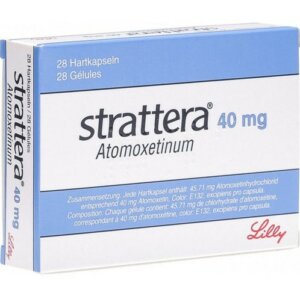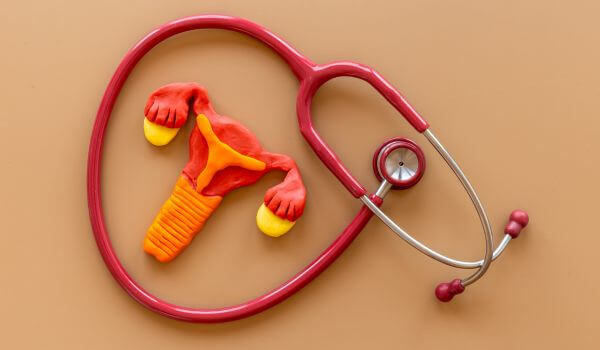
Symptoms of the disorder can show up as two very different kinds of behavior: inattention (attention deficit) or impulsivity (hyperactivity). In most cases, there are elements of both types of behavior, which is why they have been joined with the universal label ADHD (attention-deficit/hyperactivity disorder).
- Inattention means the person is easily distracted and needs to improve concentration. They have difficulty following instructions and finishing tasks, can show a short attention span, have difficulty sustaining attention, listening to others, attending to details, and forgetfulness.
- Hyperactivity and impulsivity are manifested as being incapable of remaining silent and still when required to focus. They can often appear confused, move around a lot, exhibit excessive chatting, and need help to queue patiently. They can often act impulsively and interrupt others.
- Impulsive behavior shows up as a tendency to blurt out answers or to not wait for a turn in class or games. People with impulse issues are often inclined to take unreasonable risks and act before thinking.
- Hyperactive behavior can show up as fidgeting and or talking excessively, being constantly on the move for no reason. People have difficulty remaining in their seats even when being addressed and can’t stay on task, shifting from one to another without finishing anything.
- For adults who have not been diagnosed before as possibly suffering from ADHD, the typical behaviors that are signs of the disorder are poor time management and planning skills, trouble with multitasking, and low tolerance to frustration.
How is ADHD diagnosed?
Distinguishing between normal, boisterous behavior and ADHD is not easy. All children sometimes behave in ways that may resemble ADHD, but this is not indicative of a disorder. However, if they do not shed these behaviors as they grow older, and the symptoms persist, become more severe, and result in difficulty in school, with friends, and at home, the likelihood of ADHD should be considered.
Because ADHD appears as a behavioral pattern, diagnosis depends on evaluating behavior reported and observed from many sources and some psychological testing. There are no physical tests that can either diagnose ADHD or indicate which type it is. Usually, a mental health professional such as a pediatric psychiatrist or child psychologist will get a picture of the child’s behavior from parents and teachers, and by observing the child’s behavior directly.
Some other underlying conditions can manifest the same symptoms as ADHD and must be ruled out before a definitive diagnosis. In any such case, these may need to be confirmed or excluded with physical tests before a diagnosis of ADHD can be made.
ADHD is a spectrum, and treatments will vary depending on the symptoms and the patient’s age. Specific to this article is the non-stimulant drug Striatta that doctors are able to prescribe because of its special features compared to other options.
There is not currently believed to be a cure for the disorder. The most common treatments for ADHD are medications, behavior therapy, counseling, and education services or combinations to relieve the symptoms. The most frequently prescribed medications are grouped into stimulants or non-stimulants.
What are the differences between stimulant and non-stimulant treatments for ADHD?
Stimulant medications
Stimulants work by increasing dopamine and serotonin levels in the brain. These are the “feel-good chemicals” associated with pleasure, movement, and attention. Psychostimulants like amphetamines (Dexedrine, Adderall XR, Mydayis, and Vyvanse), methylphenidates (Concerta, Ritalin, etc.), and dexmethylphenidate (Focalin) appear to promote a balance in the brain’s activity by boosting levels of dopamine.
Non-stimulant medications
Two classes of non-stimulant medications can be prescribed for ADHD, norepinephrine modulators (SNRIs) and alpha agonists. They have the same effect as stimulants by promoting signals at neuron junctures in the brain, but the chemical process is different. Rather than changing dopamine levels, they slow down the uptake of norepinephrine and serotonin, preventing dopamine reabsorption.
The most common non-stimulant prescribed for ADHD is Strattera (atomoxetine), which is currently approved by the Food and Drug Administration (FDA) for ADHD treatment of both children and adults with ADHD.
What are the pros and cons of treating ADHD with stimulants
Doctors have to balance benefits and risks when prescribing any drugs. Since ADHD cannot be cured, implications come from the need for long-term treatment that must be considered.
Pros of stimulants
- They are usually effective in relieving symptoms in the majority of cases. Generally, 70% of people with ADHD treated with stimulants showed some benefits.
- Stimulants are fast-working. Some effects are seen within an hour or less of administration. This makes it easier for prescribers to adjust the dosages and experiment with different drug types.
- Many common stimulant types are available as generics, meaning they are generally reasonably cheap.
Cons of stimulants
- Stimulants have a short half-life in the blood (typically 12 hours or less), so repeat medication every day is essential. This means that missing a dose can have immediate negative effects on behavior.
- The drugs can have serious side effects, including changes in blood pressure, cardiac pulse rate, and mood.
- Stimulants can be highly addictive and are controlled substances because of the potential that they can be misused. Misuse is more likely in older teens and young adults, who use them as “speed.” In extreme cases, people can crush the pills, snort the powder, or dissolve it in water and inject the liquid, creating extreme highs. Another possible misuse is in on-selling the drugs to third parties for illicit use, which is a criminal offense and can lead to imprisonment.
- Suddenly stopping the drug can cause withdrawal symptoms such as severe tiredness, sleep problems, and depression. It should only be reduced under medical advice.
- Because treatment is usually long-term, dosages may have to be increased regularly as the body develops immunity to its effects. This can increase the chances of addiction.
- Long-term stimulant use can slow children’s growth or cause mental health problems.
What are the pros and cons of treating ADHD with Strattera
Pros of Strattera
- Strattera is approved for use in anyone with ADHD from the age of six and up.
- It doesn’t cause dependence, tolerance, or withdrawal symptoms when treatment stops.
- There is no potential for misuse or abuse.
- Strattera is available in both brand (full price) and generic form.
- Strattera is the most common non-stimulant used by doctors treating ADHD, and is regarded the best option available when treatment with stimulants has failed or produces too many side effects or because of the dangers of abuse.
Cons of Strattera
- Treatment with Strattera does not produce immediate effects. It can take six to eight weeks before any changes are seen. This also makes adjusting the dosage more difficult.
- Strattera can produce mild side effects, including nausea, vomiting, upset stomach, constipation, mood changes, insomnia, or dizziness.
- There has been an observation of some increase in suicidal thoughts in children and teens (suicidal ideation) in the early stages of treatment. Parents and caregivers are advised to pay attention to signs of this and consult with a healthcare provider immediately.
















